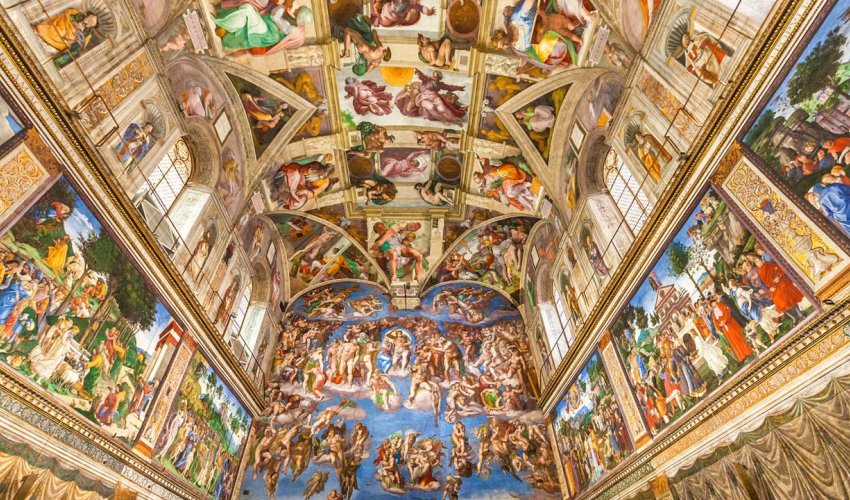Ten spectacular museums around the world - LIST

In honour of #museumweek, BBC Culture rounds up stunning buildings around the world that house the treasures of civilisation.
By Rebecca Laurence
Musee d’Orsay, FranceStanding on the Left Bank of the Seine, this venerable Paris museum was opened in 1986 in a former Beaux-Arts railway station and hotel. The layout uses its previous incarnation to full effect – galleries cluster around the grand nave and light streams in through its sweeping glass roof. Conceived to bridge the gap between the collections of the Louvre Museum and the Pompidou Centre, it focuses on late 19th and early 20th Century art and houses the world’s largest collection of impressionist and post-impressionist paintings. (Credit: Daniella Nowitz/Corbis)
Guggenheim, SpainDuring a period of city-wide regeneration in Bibao in the late 1980s, the idea for the museum came about through a collaboration between Basque authorities and the Solomon R Guggenheim Foundation. US architect Frank Gehry won the design commission and the museum opened its doors in October 1997. The impressive building stands on the edge of the Nervión River in the old industrial heart of of the city, its glass and limestone structure clad in waves of titanium. It was an immediate sensation; among its fans, the architect Philip Johnson hailed it "the greatest building of our time”. (Credit: Art Kowalsky / Alamy Stock Photo)
Oscar Niemeyer Museum, BrazilThe museum was opened in 2002-3 and nicknamed ‘the eye’ as it resembles a giant human eye perched on a yellow pillar. The legendary Brazilian architect who designed it (and gave it his name) was a key figure in the modern movement; he was 95 when the building was completed. A 2,000 sq-ft museum space houses international art along with many of Niemeyer’s own works. (Credit: Chris Schmid Photography / Alamy Stock Photo)
British Museum, LondonThe architect Robert Smirke designed the core of the museum, which opened in 1852, in the neo-Classical style. The grand south entrance, with its impressive pediment and pillars, drew inspiration from ancient Greece. In 2000, Foster and Partners created a new Great Court, which, with its spectacular glass roof, transformed the museum’s inner courtyard into the largest covered space in Europe. (Credit: David Pearson / Alamy Stock Photo)
Royal Ontario Museum, CanadaThis museum of natural history, art and culture is Canada’s largest, with over six million items in its collection. In addition to its original and 20th Century buildings, Studio Daniel Libeskind’s new entrance design, which opened as the Michael Lee-Chin Crystal in 2007, was described by the museum as "a distinctive new symbol for Toronto for the 21st Century”. The complex prismatic structure of glass and aluminium on a steel frame has its detractors though – in 2009 it made number 8 on a list of ‘the world’s ugliest buildings’. (Credit: Bill Brooks / Alamy Stock Photo)
Museo Soumaya, Mexico CityThe private cultural institution was established in 1994 and ranges across two sites – Plaza Loreto and the Plaza Carso in Mexico City. The latter, which opened in 2011, was designed by Mexican architect Fernando Romero, engineered with Ove Arup and Frank Gehry. A 151ft (46m) structure clad in 16,000 hexagonal aluminium tiles, the six-floor museum contains work predominantly from Mexico and Europe, including the largest collection of Rodin’s works outside of France. (Credit: Frederic Soltan/Corbis)
Hermitage Museum, St Petersburg, RussiaOne of the largest and oldest museums in the world, the Hermitage was opened in 1764 by Empress Catherine the Great and houses over three million pieces of art and cultural artefacts. The sprawling state museum complex consists of a number of buildings, including the grand green-and-white Winter Palace, the former home of the Russian Tsars. The colossal palace was designed in the main by Francesco Bartolomeo Rastrelli in an elaborate Baroque style. (Credit: Konstantin Kalishko / Alamy Stock Photo)
Museum of Islamic Art, DohaOpening in the Qatari capital in 2008, this museum was designed by the Pritzker Prize-winning architect IM Pei. At the age of 91, Pei travelled throughout the Arab world for six months collecting inspiration for the project. The towering five-storey limestone structure perches on reclaimed land with views across the Doha waterfront and its two wings are connected by a large central courtyard. It houses a collection of Islamic art from over 1,400 years. (Credit: Iain Masterton / Alamy Stock Photo)
Vatican Museums, ItalyThe Vatican City’s museums were opened by Pope Julius II in the 16th Century; its complex contains 52 galleries and is one of the largest museums in the world. The museum’s collection of religious sculpture and painting includes works by Raphael, Titian and Caravaggio. Its rooms include the Gallery of Maps and the Gallery of Tapestries and its very last sala is the magnificent Sistine Chapel, its walls decorated with works by artists including Perugino and Botticelli and the vaulted ceiling painted by Michelangelo. (Credit: Exotica / Alamy Stock Photo)
National Museum of Art, OsakaAfter the original 1970s building was demolished, a new structure designed by César Pelli opened in 2004. The majority of the museum – including its art collections – is subterranean, with only the entrance lobby above ground. For maximum wow factor, Pelli’s studio created a towering intertwining glass-and-steel entrance designed to resemble reeds along a riverbank or stalks of bamboo. (Credit: Robert Harding / Alamy Stock Photo)
(BBC)










www.ann.az
Similar news
Similar news
Latest news 
More news 



































 Photo
Photo 


 Video
Video 

